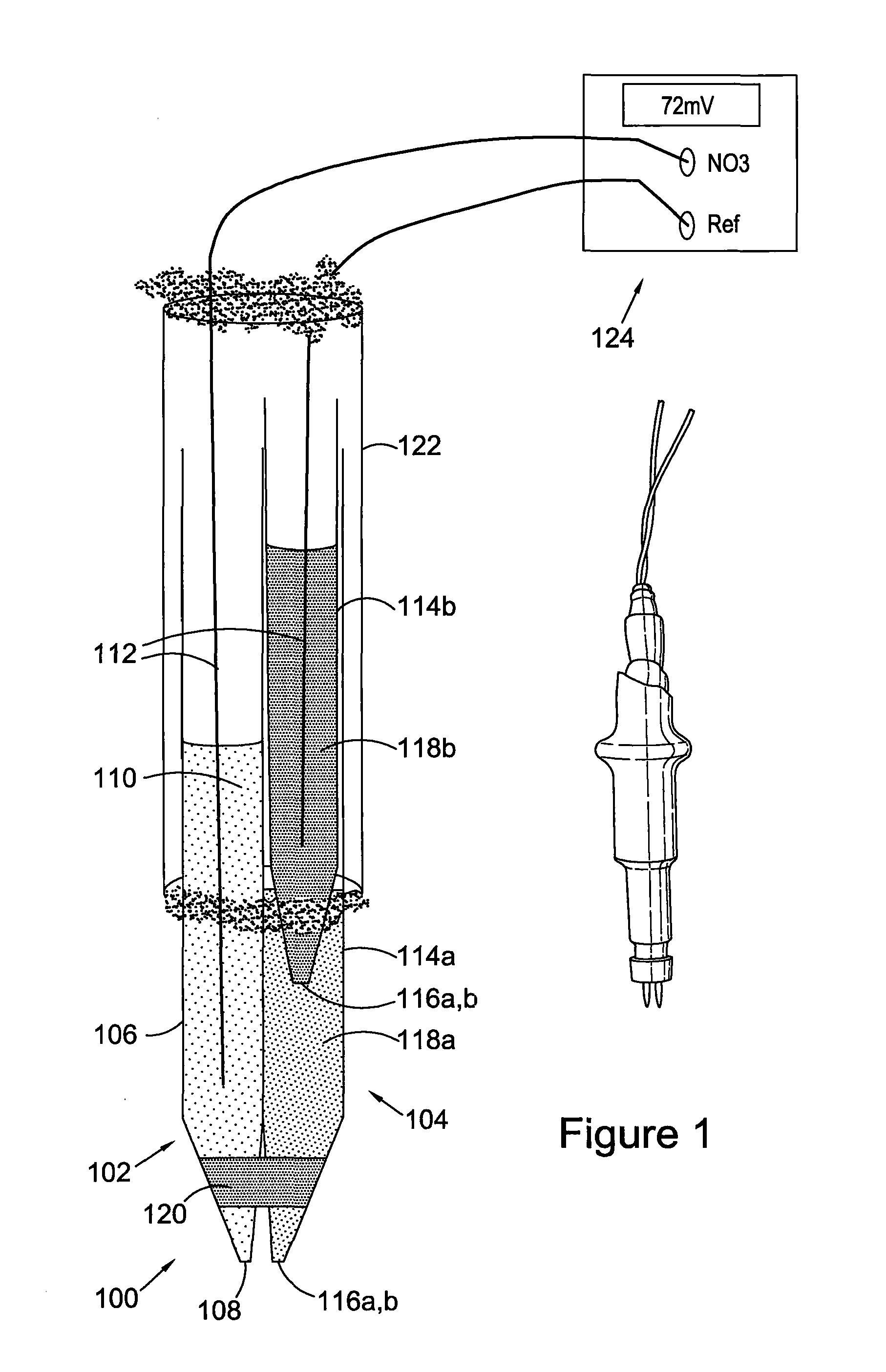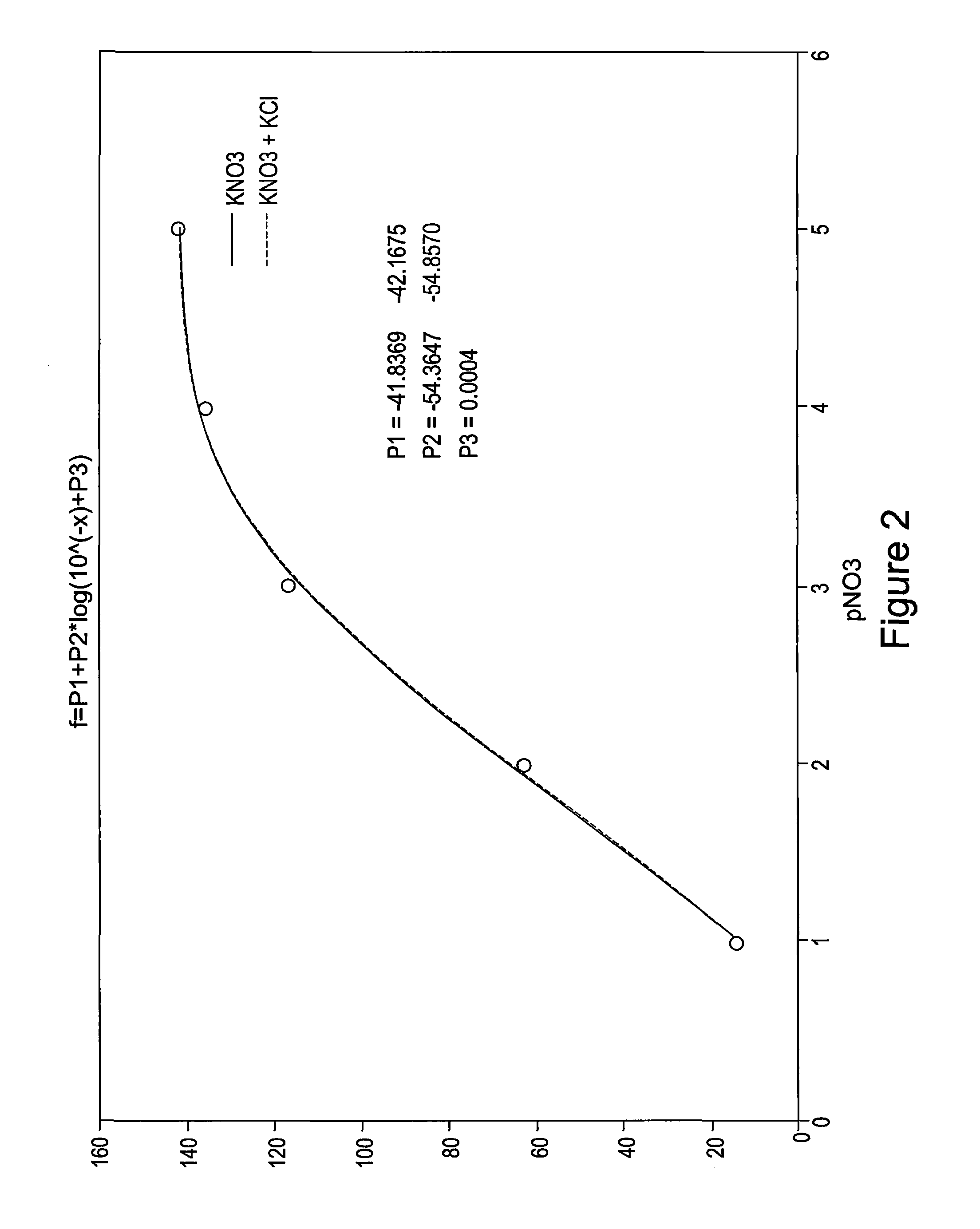Soil chemistry sensor
a sensor and soil technology, applied in the field of soil chemistry sensors, can solve problems such as ensuring effective operation of reference electrodes, and achieve the effects of improving internal hydrophobicity, facilitating measurement/monitoring actual levels, and increasing reliability
- Summary
- Abstract
- Description
- Claims
- Application Information
AI Technical Summary
Benefits of technology
Problems solved by technology
Method used
Image
Examples
Embodiment Construction
[0055]FIG. 1 shows a nitrate (NO3)-selective soil chemistry sensor 100 according to an embodiment of the invention. The sensor comprises a nitrate-selective electrode 102 and a double junction reference electrode 104. The ion-selective electrode comprises a plastic lumen at 106, in embodiments fabricated from a disposable pipette tip or plastic syringe such as a polypropylene Distritip® syringe, for low cost. An ion-selective membrane 108 is fabricated at the end of the electrode by solvent-casting a polymer such as high molecular weight PVC in combination with an ion carrier. For example for nitrate sensing a suitable ion carrier is tridodecylmethylammonium (TDDMA) nitrate, although additionally or alternatively other ion-selective components may be employed to additionally or alternatively sense other plant nutrients. The membrane composition may be dissolved, for example, in tetrahydrofuran (THF).
[0056]An example ion-selective composition for fabricating a nitrate-selective membr...
PUM
| Property | Measurement | Unit |
|---|---|---|
| time | aaaaa | aaaaa |
| depths | aaaaa | aaaaa |
| depths | aaaaa | aaaaa |
Abstract
Description
Claims
Application Information
 Login to View More
Login to View More - R&D
- Intellectual Property
- Life Sciences
- Materials
- Tech Scout
- Unparalleled Data Quality
- Higher Quality Content
- 60% Fewer Hallucinations
Browse by: Latest US Patents, China's latest patents, Technical Efficacy Thesaurus, Application Domain, Technology Topic, Popular Technical Reports.
© 2025 PatSnap. All rights reserved.Legal|Privacy policy|Modern Slavery Act Transparency Statement|Sitemap|About US| Contact US: help@patsnap.com



